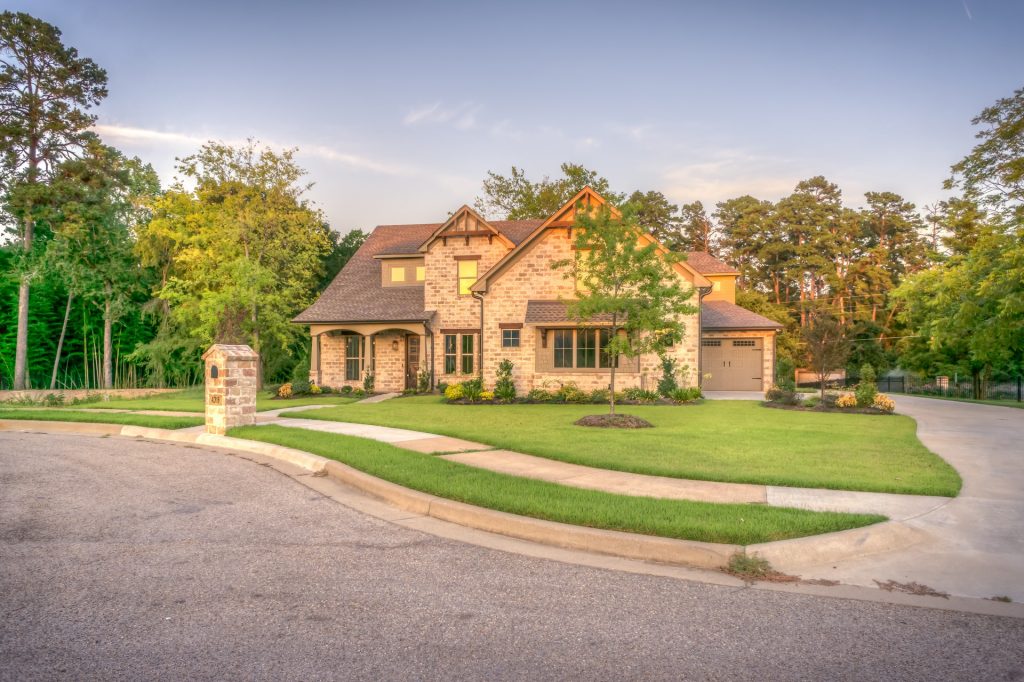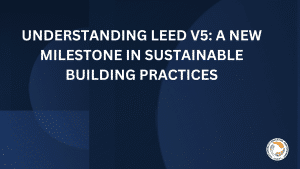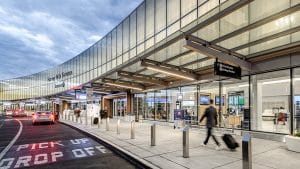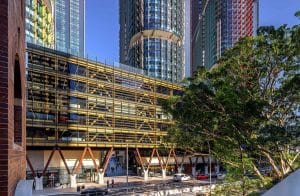What is LEED?
LEED stands for Leadership in Energy and Environmental Design and it is a certification program for green building. Developed by the U.S. Green Building Council (USGBC), LEED is an internationally recognized green building certification system that provides third-party verification that a particular building or complex was designed and constructed in a manner that uses fewer resources, minimizes waste and environmental impact, and decreases life cycle costs to achieve increased productivity and better occupant health.
Without even realizing it, you may have already step foot into one of the famous LEED buildings. If you have been to Chicago’s Sears Tower, New York’s Empire State Building, Olympic Villages in Beijing/Vancouver, or the Boston Logan Airport (to name a few), then you have been in a LEED building.
LEED is flexible enough to apply to all building types – commercial as well as residential. So if you find a way to increase the value of your home and save both money and the environment in the process, getting your home LEED certified is the way to go.
What are LEED-certified Homes?
LEED helps create living spaces where people can thrive.LEED-certified homes are designed to provide clean indoor air and ample natural light and to use safe building materials to ensure our comfort and good health. They help us reduce our energy and water consumption, thereby lowering utility bills each month, among other financial benefits. Using the strategies outlined in LEED, homeowners are having a net-positive impact on their communities.
LEED homes are also designed, constructed and operated to be resilient in adverse conditions and are developed with proactive design planning for potential impacts of catastrophic weather.
- Health: LEED homes are designed to maximize indoor fresh air and minimize exposure to airborne toxins and pollutants, making it healthier and more comfortable.
- Savings: LEED homes use less energy and water, which means lower utility bills. On average, certified homes use 20 to 30 percent less energy than non-green homes, with some homes saving up to 60 percent.
- Value: With proper planning, LEED homes can be built for the same cost as non-green homes. LEED homes can qualify for discounted homeowner’s insurance, tax breaks and other incentives. And in many markets, certified green homes are now selling quicker and for more money than comparable non-green homes.
For better homes, accountability makes a difference. Through a carefully managed, independent, third-party verification system, LEED-certification affirms the integrity of green building commitments by ensuring project teams are delivering on design plans and goals. Third-party validation helps guarantee that each project saves energy, water and other resources, reducing overall environmental impact.
Difference between a LEED certified home and a green home
A green home may have low-flush toilets or solar panels on the roof, thereby making it ‘green’, while a LEED certified home is all-encompassing. A LEED home is one that is green from top to bottom and inside and out.
Rather than focusing on one aspect such as heating and cooling, a LEED home is exemplary in energy efficiency, water use, air quality, building materials, land placement and use—essentially everything. A LEED certification is also rigorously tested and hard to achieve, unlike other green certification programs.
In fact, every LEED home is thoroughly inspected and tested to ensure it meets the tough LEED standards. Essentially, reaching a LEED status brings your home to the pinnacle of green certification—it’s the best there is.
LEED for Homes
LEED for Homes measures how well a home performs as a green home. A LEED-certified home is designed and constructed in accordance with the rigorous guidelines of the LEED for Homes green building certification program.
LEED for Homes promotes the design and construction of high-performance green homes, including affordable housing, mass-production homes, custom designs, stand-alone single-family homes, duplexes and townhouses, suburban and urban apartments and condominiums and lofts in historic buildings.
LEED for Homes is available for building design and construction projects for single family homes and multifamily projects up to eight stories –
- Homes and Multifamily Low-rise – Designed for single family homes and multifamily buildings between one and three stories.
- Multifamily Midrise – Designed for midrise multifamily buildings four stories and higher.
To get a standard LEED certification, a home needs to receive a minimum of 40-49% efficiency; silver certifications go to the houses that receive 50-60% efficiency, gold goes to homes that score 60-80%, while platinum awards go to the ones that score above 80%.
What makes a LEED home so green?
The LEED rating system for residential projects helps create living spaces that boost comfort and good health, as well as provide clean indoor air, ample natural light and reduced energy and water consumption.
On average, LEED-certified homes use 20–30% less energy than a home built to code, with some homes reporting up to 60% savings. This does not just lower your utility costs and help save money but also lessen the environmental impact of your day-to-day life.
LEED homes are also designed with resiliency in mind—constructed and operated to be resilient in extreme weather events such as floods or wildfires.
Listed below are some of the important features that LEED homes boast of which make them ‘green’ in all aspects:
Efficient use of resources
Energy efficiency is the key to getting a home LEED certified. A LEED home takes maximum advantage of the sun and wind to heat, light, and cool the building affordably. It chooses smaller, efficient HVAC systems, lighting, and appliances. Also, LEED homes make use of renewable energy wherever possible.
Improved indoor air quality
LEED homes choose products that emit few or no toxic gases, including low-VOC or VOC-free paints, primers, sealants, stains, and carpet and flooring adhesives, to improve indoor air quality. Allergens are brought to a minimum with indoor moisture controls that prohibit the growth of common molds. Also, LEED homes are designed in such a way so as to minimize air leakage. They install top-notch windows and glass doors that meet or exceed the EPA’s ENERGY STAR requirements.
Minimize water waste
Instead of letting rainwater and gray water (water collected after being used in the washing machine, shower or sink) go to waste, LEED homes install a system or systems to capture some or all of it for landscape irrigation or indoor water use. These homes install low-flow faucets and showerheads, and toilets that are low-flow too.
Better Insulated
Every nook and corner of a LEED home is sealed and insulated which reduces the overall heating and cooling costs drastically. The general idea is that the better the insulation, the more energy efficient the home. So a LEED home features prime insulation in the walls, in floors between interior and exterior spaces (such as the floor above the garage), in shafts, in the attic and ceilings, and in common walls between dwelling units (in the case of a multi-unit building).
Better Ventilation
All LEED homes feature good ventilation that assures better quality air and also reduced expenditure on lighting.
Beat the heat
Many LEED homes beat the heat and achieve a cooling effect by planting trees to shade at least 50 percent of sidewalks, patios and driveways within 50 feet of the house. Trees selected are the species native to the region that will require fewer or no pesticides and fertilizers to thrive. And when installing patios and driveways, LEED homes use white or gray concrete or other materials that reflect rather than absorb radiation.
Made from green sustainable materials
Green, high quality building materials used in the construction of LEED homes minimize or eliminate indoor air quality concerns, eliminate toxins, and greatly reduce waste. They are now widely available, often from local manufacturers.
Less operating and maintenance cost as compared to normal homes
LEED homes install heating, ventilation and air conditioning (HVAC) equipment that meets or exceeds ENERGY STAR standards and are highly energy efficient. They also install a high-efficiency hot water distribution system with insulated hot water pipes, and insulated hot water heater, as well. As such, LEED homes are less expensive to operate and maintain.
Also Read: What is the difference between Energy Star and LEED?
Small in size
Because small homes consume less energy and require less material resources than larger homes, most LEED homes are smaller homes with lower point thresholds to achieve certification. So remember that size matters, and skip the McMansion if you want your house to be a green one.
Wisely chosen site
LEED homes are usually built on a well-chosen site that is in or near an existing community, near existing infrastructure (such as sewers and a water supply), and with access to good walking and biking routes and public transportation
Please note that planning and design are critical components when it comes to making a home as green as it can be – and all the details involved with earning LEED certification points are complicated. So make sure you work with experienced professionals who are intimately familiar with LEED requirements, energy efficient and sustainable design, and green building practices. Ideally, if you want your home to earn LEED certification, at least one member of the project team should have official LEED for Homes credentials.
With inputs from:











